Major U.S. Cellular Carrier Overview - T-Mobile, Verizon, AT&T and Dish
Cellular data is probably the easiest option for getting online while traveling in an RV or boat. Choosing the best cellular carrier for your unique traveling needs can be a challenging topic.
If you live in one location and only travel occasionally, it’s relatively easy to pick the best cellular carrier for you.
While there might be an obvious “best” cellular network for a specific location, RVers and boaters have a harder choice to make since... our location changes, often!
There is simply no single cellular carrier network that works best everywhere an RV or boat might travel.
All of the nationwide carriers have strengths and weaknesses in specific locations across the country. Each offers different plans and policies that make them more or less suitable as a mobile internet solution, depending on your needs.
As a frequent traveler, you need to consider what carrier—or, more likely, what combination of carriers—will give you coverage and data in the places you want to visit.
This article provides an overview of the strengths and weaknesses of the current major cellular carriers (Verizon, AT&T, T-Mobile, and the newest carrier—Dish/Boost Wireless) in the U.S. as they relate to mobile internet for RVers, cruisers, and frequent travelers seeking an on-the-go home internet replacement.
If you're a member, please log in above to see your exclusive content.
Don't need a membership? Other ways you can support our work here:
-
As seen in our videos!
-
Get a FREE Month of Starlink!
And our team will get one too!
-
Get a FREE Month of T-Mobile Unlimited Data
Join the Calyx Institute, and get a bonus month - and we do too!
-
Save $20 on Visible
Verizon's prepaid phone plan, we also get a $20 credit.
-
Leave a Tip!
Send our team some beer money!!
-
Share About Us!
Link to our content, tell others about MIRC. It's Free!
It is with huge gratitude to our members for making the free unbiased educational content on our site possible. We're not sponsored, you'll find no 3rd party ads and we don't sell gear or data plans.
Our members get exclusive access to our in-depth content, classrooms, vendor discounts (that can save you more than membership!), alerts, insider info and interactive guidance. They can even book private advising sessions.
If mobile internet is an important part of your lifestyle, consider helping make MIRC possible by joining or supporting our mission.
Video: Best Cellular Carrier for RV and Boat Travel
A quick video overviewing T-Mobile, Verizon, AT&T and Dish Wireless and how they compare to be the best choice for your RV or boat travels:
Your Best RV Cellular Carrier - Coverage and Compatibility
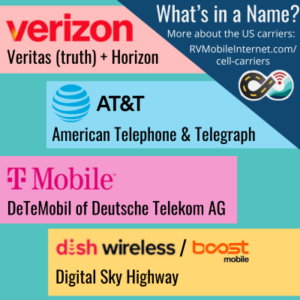
Unlike a decade ago, there is no longer a single best nationwide cellular carrier. The major three all have solid coverage maps across the country, and even newcomer Dish/Boost provides coverage for most of the US population. However, coverage by individual carriers can vary quite a bit as you zoom into specific locations, especially in more rural areas. Heck, even within the same campground, a carrier can be solid in one campsite and weak just across the loop.
When comparing cellular carriers to best suit your RV or boat travels, you need to consider coverage maps for LTE and 5G, compatible devices, and supported frequency bands..
And, of course, available data plans for the devices you want to use in your mobile internet setup.
We are also well into embracing the latest generation of cellular technology, as all carriers are transitioning from 4G/LTE to 5G.
Verizon, AT&T, and T-Mobile's networks are all built on the same underlying fourth-generation (4G) cellular network technology, known as LTE. That coverage will remain viable for many years to come. The newest carrier's network, Dish Wireless (also known as Boost Mobile), is an all-5G network, but it's still growing in the US and lacks data-only plans.
5G technology is being deployed on all carriers in the short-range mmWave (extremely fast but short-range), mid-band (medium range and super fast), and low-band (long range and decently fast) spectrums. But each carrier is not equal in terms of 5G support.
All of the carriers at this point have phased out their legacy 2G and 3G networks.
For more on understanding the technology behind cellular:
Cellular Data Resources - Gear, Plans, Signal, Tech Dives
All of the carriers have widespread coverage maps. But they vary at the local level and in their current roll-out of 5G technology.
In the USA, the current four major nationwide carriers are:
- T-Mobile - T-Mobile's coverage increased substantially after their acquisition of Sprint and they are leading the race with long & mid-band 5G.
- Verizon - Has the most nationwide LTE coverage, and is usually a top pick for travelers, although frequently congested. Their fast 5G mid-band coverage is still being actively deployed in 2025.
- AT&T - Close second to Verizon in terms of LTE coverage but also generally less congested. Their 5G long range coverage beats Verizon's and their mid-band 5G is being deployed slower than other carriers as of 2025.
- Dish - The newest carrier, Dish's 5G network currently covers about 20% of the country, but roams onto AT&T and T-Mobile. They market under the brand names of Boost Mobile and Project Genesis, and currently only offer smartphone plans (no data only plans for hotspots or routers).
Coverage Map Comparison
Below is a quick comparison of the major carrier's native LTE & 5G (the darker color) coverage maps, taken from the April 2025 HD Map update from our app, Coverage?.
For more on the carriers for RVers & Cruisers:
Guide to the Major U.S. Cellular Carriers
Got Coverage?
Although you can go to each carrier’s maps online to scout out ahead, we decided to make it even easier.
We wrote an app for that!
Coverage? overlays the carrier's coverage maps so you can create a personalized map to better plan your travels around connectivity! It also has integrated SpeedTest® from Ookla® to save your performance results to better plan future travels and update campground/marina reviews.
While the carrier's maps may be 'optimistic' at times, using the carrier's maps is a great complement to also checking site-specific crowdsourced resources.
For more:
Tips for Travel Planning Around ConnectivityThe maps are stored on device, so you don’t need to have coverage to find out which direction to head. Get the app now for Android or iOS:
Comparing Cellular Carriers for RV & Boat Travel
Below is a general profile of each major carrier and how they might apply to choosing the best cellular carrier for your RV or boat travels.
T-Mobile
 While T-Mobile was last in the pack in its LTE coverage map, they are the clear leader in 5G.
While T-Mobile was last in the pack in its LTE coverage map, they are the clear leader in 5G.
T-Mobile took an early lead thanks to strategic long-range and mid-band spectrum purchases.
T-Mobile aggressively filled in the rural coverage gaps via their purchase of a huge chunk of long-range 600MHz cellular spectrum (LTE Band 71, 5G n71) and mid-band 5G n41 with their Sprint acquisition completed in 2022.
When T-Mobile has coverage, its network speeds are consistently some of the fastest. They are worthy of consideration for including as an option in a mobile internet arsenal and worth investing in 5G capable gear to best take advantage of their network.
T-Mobile Device Compatibility Tips:
If you want broad compatibility with T-Mobile's network, seek out devices that support these bands:
- T-Mobile LTE Bands: 2, 4, 5, 12, 25, 26, 41, 46, 48, 66, 71 (13 in Puerto Rico)
- T-Mobile Key Roaming Bands: N/A
- T-Mobile 5G Low-Band: n71
- T-Mobile 5G Mid-Band: n25, n41, n66, n77
- T-Mobile 5G mmW Bands: n260, n261 (Note that mmWave is only available in a handful of areas)
T-Mobile names for its two 5G networks:
- 5G UC (Ultra Capacity)- mmWave & mid-band 5G.
- 5G - Low-band / nationwide 5G.
T-Mobile started their 5G deployment utilizing their very low band 600 Mhz spectrum (band n71) making it the first to offer nationwide 5G coverage, and T-Mobile has also rolled out on Sprint's former mid bands (n41 and n25) and very limited mmWave (n260 & n261). If you're ready to hop on board with T-Mobile 5G, be sure any device you select supports n25, n71, and n41 at a bare minimum - mmWave support isn't critical for T-Mobile. T-Mobile also won some mid-band n77 spectrum, but it's a low priority for deployment and, as of early 2025, T-Mobile has only done some test deployments.
T-Mobile is also deploying some coverage using LTE-LAA (LTE Band 46) - but this short-range band will typically only be found in congested urban areas. T-Mobile also has some plans to use CBRS spectrum (Band 48) too. But these are both minor players compared to the core bands.
T-Mobile customers also benefit from Band 13, but only in Puerto Rico (Band 13 is under Verizon's control everywhere else).
T-Mobile is in the process of acquiring US Cellular's wireless operations and about a third of its spectrum licenses. The deal is expected to be completed in mid-2025. Another third of US Cellular spectrum holding is slated to be sold to Verizon and AT&T.
Recent T-Mobile News Stories:
Verizon
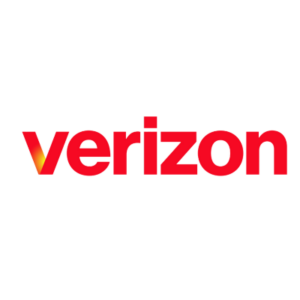 Verizon was the leader in 4G/LTE coverage and typically performed well overall.
Verizon was the leader in 4G/LTE coverage and typically performed well overall.
However, because Verizon’s network is known to have the widest coverage and they have limited LTE spectrum in many locations, it’s not uncommon in some areas to find that the local Verizon tower is overloaded and sluggish during peak times, especially in popular travel destinations for RVers and boaters.
Verizon remains in distant second behind T-Mobile when it comes to 5G, but it is rapidly expanding its mid-band 5G network using band n77, which will be the core of Verizon's 5G network for some time to come. As of mid 2025, Verizon claims that 280 million Americans are now covered with mid-band 5G.
Verizon Device Compatibility Tips:
If you want broad compatibility with Verizon's network, seek out devices that support these bands:
- Verizon Native LTE Bands: 2, 4, 5, 13, 46, 48, 66
- Verizon Key LTE Roaming Bands: 12, 14, 29, 30
- Verizon 5G Low-Band: n5, n13 (future)
- Verizon 5G Mid-Band: n2, n66, n77
- Verizon 5G mmW Bands: n260, n261 (Note that mmWave is only available in the urban cores of a few cities and crowded places like stadiums and airports)
Verizon names for its 5G flavors:
- 5G UW (Ultra Wideband) - mmWave and Verizon's n77 mid-band spectrum (some plans do not officially have access to 5G UW)
- 5G NW (Nationwide) - Low-band / "Nationwide" 5G.
Verizon's low-band, long-range 5G, is generally not impressive, with performance more like LTE. When Verizon rolled out low-band 5G, it didn’t have a surplus of low-band spectrum that it could dedicate to 5G, so it layers 5G on top of its LTE network using a technology called Dynamic Spectrum Sharing (DSS). DSS allows 5G to share the same spectrum as LTE. However, the downside is that LTE and 5G users share the same spectrum, and the network switches back and forth to serve both types of users, impacting performance.
Verizon is planning to eventually use longer-range band 13 for 5G (labeled as band n13); however, this seems far off, as many flagship phones (including the latest iPhone and Samsung smartphones) still don't have support for it. They can't start that transition without disrupting their LTE-dependent customers.
Verizon's initial 5G efforts focused on extremely short-range mmWave frequencies (only available in urban areas and venues like airports and stadiums), which it dubbed 5G UW.
Now, however, the vast majority of 5G UW coverage is from the new mid-band n77 spectrum that is dedicated to 5G. Verizon began deploying its mid-band 5G n77 network in 2022, but due to regulatory and legal restrictions, Verizon couldn't turn on much of n77 until late 2023. Verizon continues to expand n77 and, over the last year, has been pushing coverage out to more rural areas and smaller towns.
Verizon can roam onto AT&T in some places, so AT&T's key LTE Bands 12, 14, 29, and 30 will help take advantage of this. In some areas, Verizon has deployed LTE-LAA (LTE Band 46), but this short-range band will typically only be found in congested urban areas. Verizon also uses CBRS spectrum (Band 48) and LTE Band 66 (an extension of Band 4).
Recent Verizon News Stories:
AT&T
 AT&T is still last among the big three for 5G, but it is catching up and has improved substantially since our last update.
AT&T is still last among the big three for 5G, but it is catching up and has improved substantially since our last update.
The big change is that AT&T is finally deploying fast mid-band spectrum on n77, which is dedicated to 5G. It also continues to have small slices of low-band spectrum dedicated to 5G using band n5, but these small slices don't significantly improve performance over AT&T's robust LTE network and can often be slower.
Even though AT&T is last for 5G behind T-Mobile and Verizon, it still has a very good LTE network that offers great performance in many areas. AT&T has lots of bandwidth dedicated to LTE, including Band 14 for the US Government FirstNet contract. Outside of areas where mid-band is deployed, turning off 5G on your device can still be beneficial to see if LTE performs better.
AT&T Device Compatibility Tips:
If you want broad compatibility with AT&T's network, seek out devices that support these bands:
- AT&T LTE Bands: 2, 4, 5, 12/17, 14, 29, 30, 46, 48, 66
- AT&T Key LTE Roaming Bands: 13
- AT&T 5G Low-Band: n5
- AT&T 5G Mid-Band: n2, n66, n77*
- AT&T 5G mmW Bands: n260 (Note that mmWave is only available in the urban cores of a few cities and crowded places like stadiums and airports)
* AT&T's n77 will only be compatible with devices featuring the X62 5G modem chipset or higher.
AT&T names for its 5G flavors:
- 5G+ - mmWave, and C-Band mid-band spectrum.
- 5G - Low-band / "Nationwide"
- 5Ge - LTE-Advanced (NOT real 5G, despite the label!)
Note: Many legacy AT&T data plans are LTE only, and do not support 5G (including Unlimited Plus hotspots and Mobley).
AT&T's low-band 5G "nationwide" coverage is wide but shallow. Like Verizon, AT&T uses some DSS, but most of its low-band 5G is from dedicated but small slices of 850 MHz spectrum using band n5. The small slice of spectrum means that there isn't a lot of bandwidth; therefore, speeds are generally not any faster (and can often be slower) than an LTE connection.
AT&T's mid-band and mmWave 5G is much faster and dedicated to 5G use. However, like the mmWave deployments on every other carrier, mmWave is limited to dense urban areas and large venues and is irrelevant to most mobile users.
AT&T's new mid-band spectrum using n77 (aka "Andromeda")constitutes the bulk of AT&T's 5G+ coverage map. AT&T was the last carrier to begin deploying mid-band 5G spectrum, but it is now trying to expand as rapidly as possible.
Andromeda compatibility will only be possible in devices with the Qualcomm X62/X65 (or newer) cellular modems. This is a big consideration for those investing in 5G gear. In our Gear Center you can filter to find hotspots and routers based on modem generation or band support.
On LTE, Band 14 (aka FirstNet) support is important for AT&T. Though FirstNet is designed to prioritize public safety communications, it is open to regular consumers with compatible hardware to utilize this long-range band at a lower priority for enhanced coverage and speed.
AT&T is also deploying some coverage using LTE-LAA (LTE Band 46) - but this short-range band will typically only be found in congested urban areas. AT&T also has some CBRS spectrum (Band 48) in some locations.
AT&T has limited roaming on Verizon in some places, so Verizon's LTE Band 13 can help take advantage of this extra coverage.
Recent AT&T News Stories:
We usually talk about the "big three" cellular networks, but Dish Network is actually an official fourth nationwide carrier, although it has comparatively little market share.
Dish is known primarily for providing satellite TV service, but it has also offered cellular service, and the company has long desired to break into the cellular market. Dish got a massive boost due to requirements set by the Department of Justice's approval of the merger between T-Mobile and Sprint. With Sprint going away, the federal government wanted a new 4th carrier to ensure more competition. The result is that cellular spectrum and network assets were transferred to Dish as part of the T-Mobile/Sprint merger, along with a roaming rights agreement, to give Dish enough resources to compete.
Unlike the big three carriers, Dish is building its network from scratch, which means it is a native 5G network with no support for LTE outside of roaming agreements with other networks. The network has grown significantly—it currently covers about 270 million Americans with a true 5G and innovative network unlike what the other carriers offer.
Dish has struggled not with its technology but with getting customers and staying afloat financially. In early 2024, EchoStar, which owns Dish Network and Boost Mobile, hinted at bankruptcy, which was ultimately avoided. However, the problem of not attracting enough customers and not generating enough revenue remains.
One problem is branding, which even we have struggled to track. Dish started out with the "Project Genesis" brand (which still exists), but also had Boost Mobile, Republic Wireless, and Ting. Now, the company seems to have settled on the Boost Mobile brand for consumers.
One advantage of Dish's growing network and having so few customers is great performance when on a native dish tower - congestion is almost never a problem. Dish also still has roaming agreements with AT&T and T-Mobile for other areas.
The major downside is that Dish currently only offers smartphone plans. The lack of data-only plan options limits the appeal to our mobile data user audience - although those who snagged their unlimited hotspot lines for $20/month when available, continue to enjoy the benefits.
Dish Wireless

Dish Device Compatibility Tips:
Dish has licenses to the following 5G cellular bands:
n26, n29, n48, n66, n70, n71
Other than n66 (also used by Verizon) and n71 (used by T-Mobile), these are mostly oddball 5G bands that no other carrier in the United States uses.
Since Dish is the only company using some of these bands, not all device makers currently have built-in support, but that will change as Dish grows.
Bands n26 and n48 will presumably not be widely supported until further down the road.
Recent Dish News Stories:
Regional Carriers for RV Travel
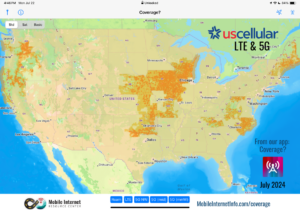
In addition to the big national carriers, a number of smaller regional and even local carriers own and operate their own cellular networks. However, they are unlikely to be the best cellular carrier for most RV or boat travel.
Some larger examples include US Cellular, C-Spire Wireless, nTelos, Cellcom, and Cellular One.
These smaller regional carriers are usually poor choices for travelers unless you know that you will primarily be spending time in areas where they have a strong native presence.
Even if the regional carrier has nationwide coverage through roaming agreements, if you’re utilizing the service primarily outside its home region, you can encounter all sorts of restrictions and limitations.
Regional carriers are also often acquired by the larger nationwide carriers—for example, T-Mobile is in the process of acquiring the the wireless assets and much of the spectrum licenses for the nation's largest regional carrier, US Cellular.
And if you are out of your home territory for too long on a regional carrier, your account will likely be canceled.
MVNOs & Resellers
When shopping for data plans, you'll find many other brands that are all based on the major carrier's network.
Each major carrier also owns prepaid subsidiary brands, such as Metro by T-Mobile, Visible by Verizon, and Cricket Wireless by AT&T.
Then, there are third-party companies that sell their own data plans backed by the major carrier's networks. Some of them even utilize multiple carrier networks on a single SIM card.
MVNOs (Mobile Virtual Network Operators) are independent companies that have bulk purchasing agreements with carriers to package their own plans. Some frequent names are RoamLink, Consumer Cellular, US Mobile, and Google Fi Wireless.
Then, there are third-party resellers who may or may not have legitimate agreements and are basically just reselling existing plans from the carriers. These can be a great way to get a lot of data, but these plans have a lot of volatility. They tend to work—until they don't.
Check out our further resources for shopping for data plans.
Shopping for Cellular Data Plans
Finding the right plans for your needs is no easy task - quite simply mobile travelers using cellular data as their primary way online is not how most carriers have designed their plans. Many of us want plans that provide copious amounts of data.
Here's our video going over ways to get LOTS of data for use in your travels:
But a data plan alone will not keep you online. You also need the right gear, signal enhancing strategy and planning your travels around the options you carry with you. Head on over to our collection of guides:
-
Top Data Plan Picks
Our constantly updated list of the BEST data plans.
-
Which Carrier is Best?
Is Verizon, AT&T, T-Mobile or Dish best for your travels?
-
Selecting Data Plans
Our deep dive into understanding data plans and shopping for them.
-
Data Plan Pricing Grid
Our always updated spreadsheet comparing all data plans suitable for mobile internet.
-
Getting LOTS of the Data
Learn how to get lots of cellular data in your mobile internet arsenal.
Starlink - Satellite Internet
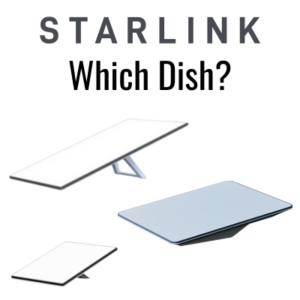 Starlink is also a great option for mobile internet, although it's not cellular based but satellite. It's a popular option with mobile users.
Starlink is also a great option for mobile internet, although it's not cellular based but satellite. It's a popular option with mobile users.
However, it comes with its own challenges, like needing a clear view of the sky, higher power needs, and larger equipment to install or deploy. It can also be subject to poor performance in more populated locations.
It can be a great complement to cellular-based internet for those requiring a reliable mobile internet setup, but it is generally not a full replacement for those who visit a variety of locations.
Starlink Overview for RVs & Boats
Conclusion: The Best Cellular Carrier Depends on Your Needs
All of the major carriers have their strengths and weaknesses. The best cellular carrier for your RV or boat travel may just be the one that works best in your current location.
If you change locations frequently in your RV or boat travels, you'll want to determine which carrier, or possibly which combination of carriers, will give you the best coverage in the locations you'll be visiting.
And you absolutely need to also consider what data plans are available for the devices you want to use in your mobile internet setup, so that you can best meet your unique needs to keep online.
Explore the Resource Center
Have Questions?
Join our 'Library Desk':
Internet for RVers & Cruisers Facebook Group
We cross post news articles and guides, and can help point you in the right direction to our content here on the resource center.
It is with gratitude to our premium members that we're able to offer our free content - and for that, they also have access to our member Q&A areas for more in-depth guidance.
Become a Member
 The MIA is our premium membership - designed for those who consider mobile internet an important part of their lifestyle.
The MIA is our premium membership - designed for those who consider mobile internet an important part of their lifestyle.
In thanks for making content like this possible, we offer a bunch of additional perks. From interactive guidance, in-depth member exclusive content, discounts, alerts, classroom and ability to book private advising sessions.
Stay In the Know
We're constantly tracking the industry and analyzing new developments for mobile travelers. If you'd like to receive updates, we offer several ways:
- Subscribe to our free monthly newsletter
- Subscribe to our News Stories RSS Feed
- Subscribe to our YouTube Channel
- Follow our Facebook Page
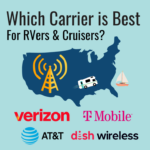
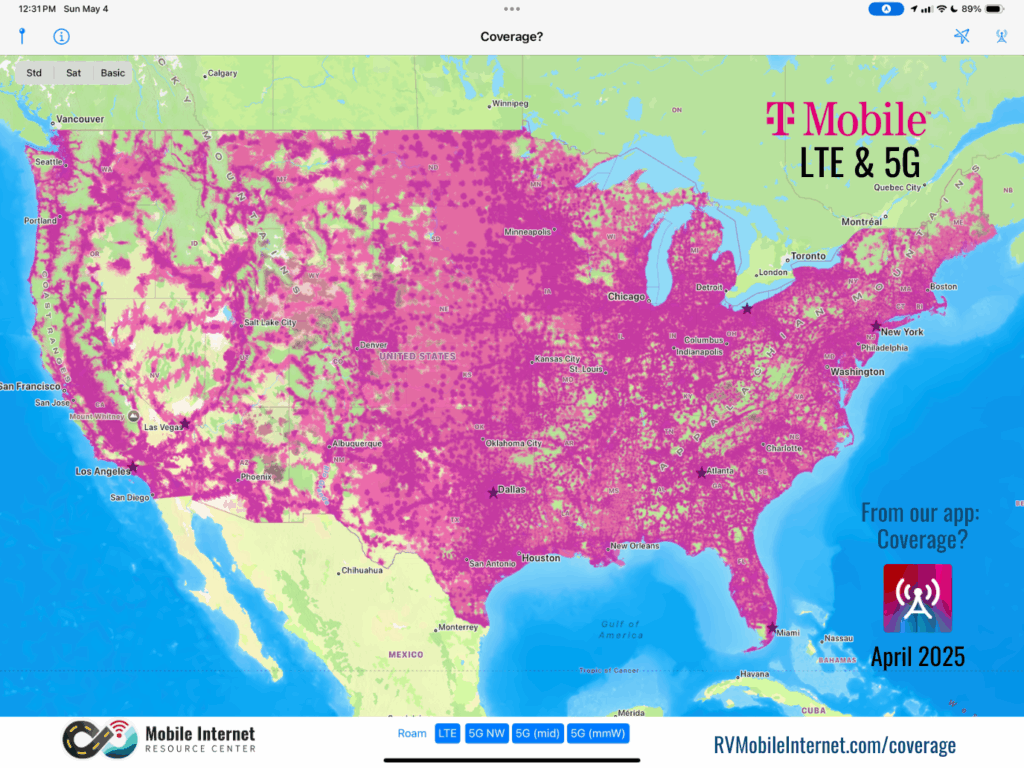
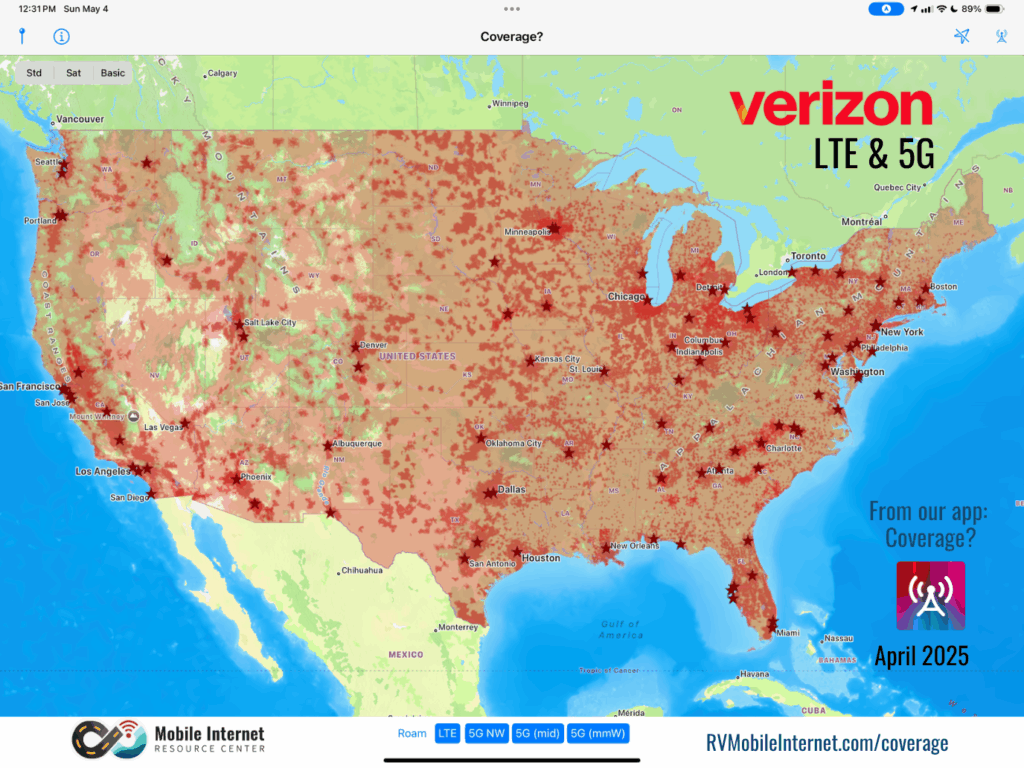
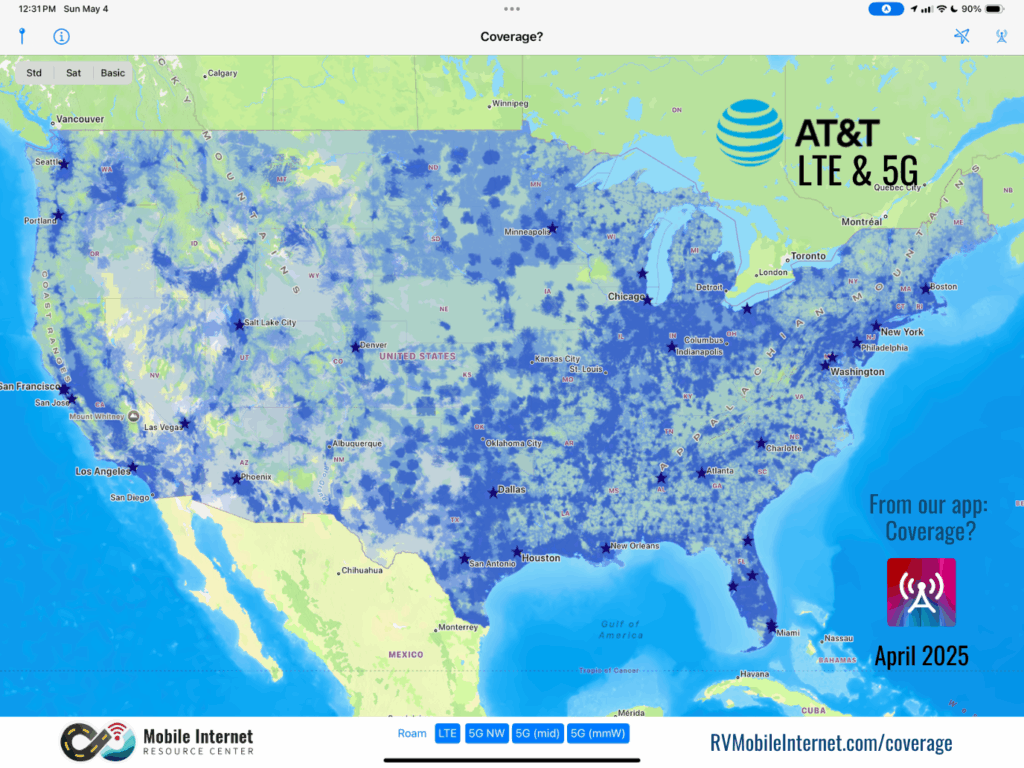
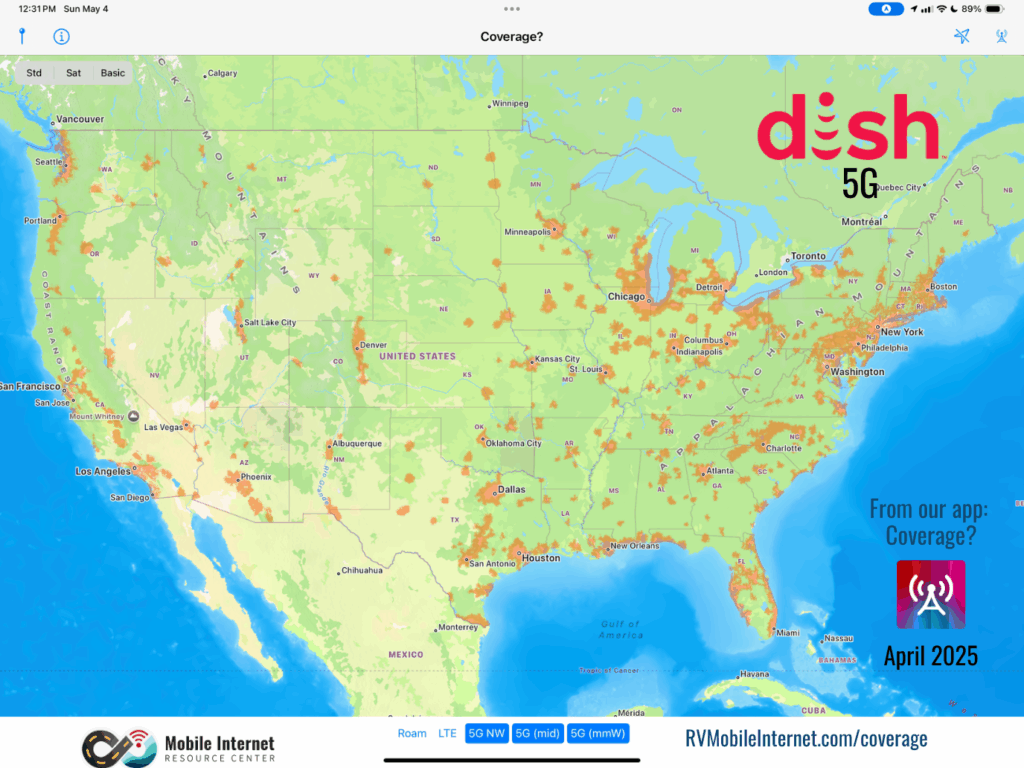
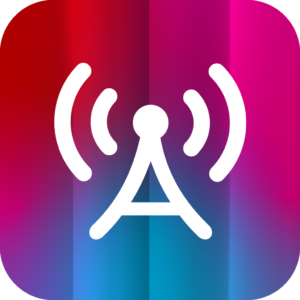
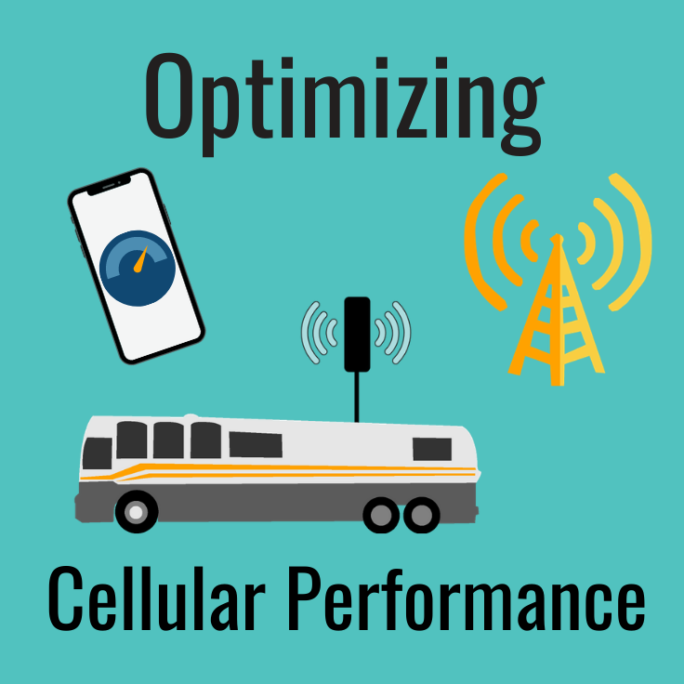
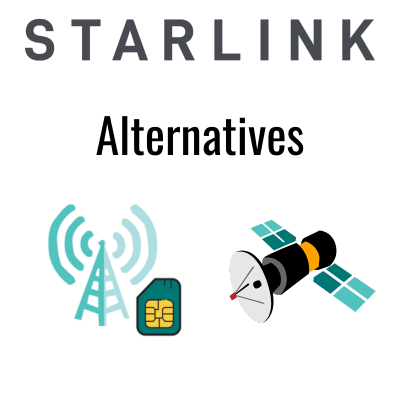
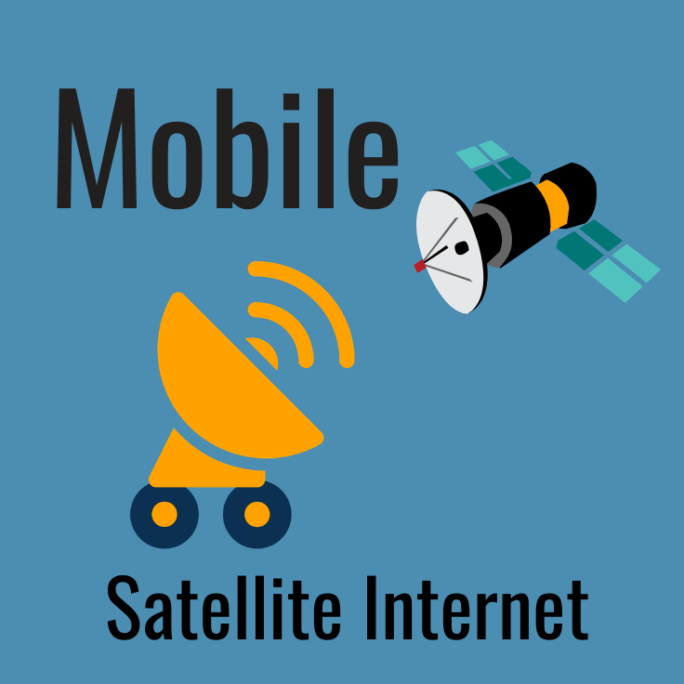

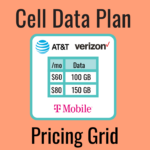

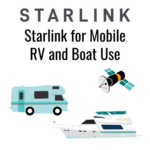

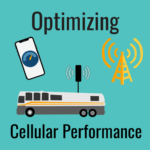
 Mobile Internet Resource Center (dba Two Steps Beyond LLC) is founded by Chris & Cherie of
Mobile Internet Resource Center (dba Two Steps Beyond LLC) is founded by Chris & Cherie of